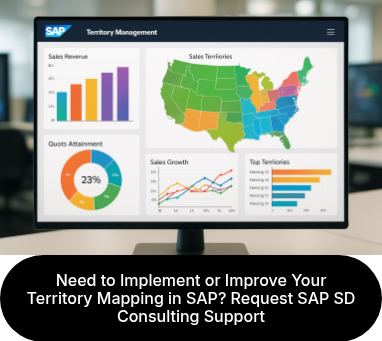Discover how territory mapping can give your business a competitive edge in today's market.
What is Territory Mapping?

Unlock new growth and build a sustainable competitive edge with territory mapping. By visualizing and analyzing business territories, organizations gain critical insights into market opportunities, competitor strengths, and customer needs—enabling smarter, data-driven strategic decisions that drive measurable results. Explore how territory mapping empowers your business to outperform the competition.
Territory mapping can be done using various tools and techniques, which we will explore further in the following sections. The ultimate goal of territory mapping is to help businesses make informed decisions based on a comprehensive understanding of their competitive landscape.

The Importance of Territory Mapping in Competitive Analysis
Territory mapping plays a vital role in competitive analysis for several reasons.Territory Mapping: Gain a Competitive Edge with Smart Market Analysis
- Market Share: It allows businesses to identify their existing market share and assess their position relative to competitors. By visualizing territories, businesses can easily identify areas where they are strong and areas where they are lagging behind.
- Identify Untapped Markets: Territory mapping helps businesses identify potential gaps and untapped markets. By analyzing territories, businesses can identify areas where competition is low or non-existent, presenting opportunities for expansion and capturing new customers.
- Gain Customer Insights: Territory mapping provides valuable insights into customer behavior and preferences. By mapping territories and analyzing customer data within those territories, businesses can identify patterns, trends, and preferences that can inform marketing strategies and product/service offerings.
Overall, territory mapping is a critical step in competitive analysis as it provides businesses with a comprehensive understanding of their market presence, competition, and potential areas for growth and improvement.

Tools for Territory Mapping
There are several tools available to perform territory mapping effectively:
- Geographic Information Systems: One popular tool is geographic information system (GIS) software, which allows businesses to visualize and analyze geographic data. GIS software provides advanced mapping capabilities, allowing businesses to overlay various data layers, such as customer demographics, competitor locations, and market trends.
Pro-Tip:
For best results, start by layering your own customer and sales data over market and demographic data in your GIS platform. This enables sharper insight and more precise territory decisions. - Customer Relationship Management: Another useful tool for territory mapping is customer relationship management (CRM) software. CRM software not only helps businesses manage customer relationships but also provides features for territory management. With CRM software, businesses can assign territories to sales teams, track customer interactions within specific territories, and analyze sales performance by territory.
Pro-Tip: Automate territory assignments in your CRM where possible. This streamlines sales processes and ensures teams cover all high-potential areas without overlap - Digital Maps: In addition to GIS and CRM software, businesses can also utilize online mapping platforms, such as Google Maps, to create customized territory maps. These platforms offer user-friendly interfaces and allow businesses to easily add markers, boundaries, and other relevant information.
Pro-Tip: Use digital maps for fast visualization and quick collaboration among teams. Share live map links to keep everyone aligned on territory boundaries and changes
Ultimately, the choice of tools for territory mapping depends on the specific needs and resources of each business. It is essential to select tools that provide the necessary functionalities and are user-friendly for efficient and accurate territory mapping.

Practical Examples: Territory Mapping in the Soil Food Web Service Industry
To illustrate the practical application of territory mapping, let's consider the soil food web service industry. In this industry, businesses provide services related to soil health, such as soil testing, nutrient analysis, and organic farming consultation.
Territory mapping can help businesses in this industry identify their target markets and plan their service offerings accordingly.
For example, a soil food web service provider can use territory mapping to identify areas with a high concentration of organic farms or areas with a high demand for soil testing services.
By analyzing territories, businesses can also identify areas where competition is intense and areas where there is a lack of service providers. This information can guide businesses in making strategic decisions, such as targeting underserved areas or adjusting pricing to remain competitive.
Overall, territory mapping in the soil food web service industry can help businesses optimize their service offerings, target the right customers, and gain a competitive edge in the market.
Pro-Tip: Regularly update your territory data as your market evolves. Ongoing refinement leads to more accurate outreach and improved growth outcomes.
Request Territory Mapping Consulting Support
If you're interested in leveraging the power of territory mapping for your business, consider requesting territory mapping consulting support. Our team of experts can provide personalized guidance and assistance in implementing effective territory mapping strategies.
With our consulting support, you'll gain access to industry best practices, advanced tools, and expert insights to enhance your competitive analysis and drive business growth. Don't miss out on the opportunity to gain a competitive edge in today's market. Contact us today to request territory mapping consulting support.
Take the first step towards unlocking the full potential of your business with territory mapping!


